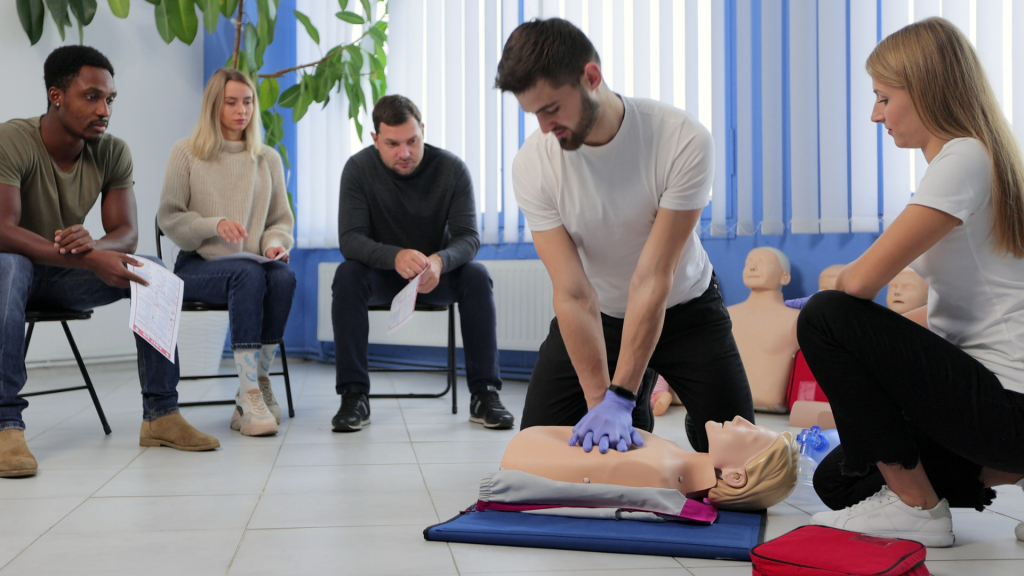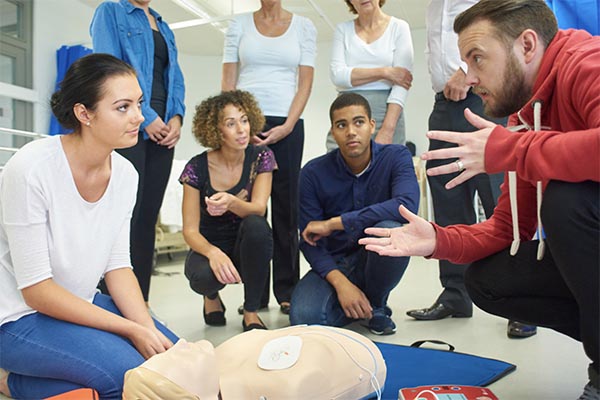
Cardiopulmonary resuscitation (CPR) is a critical skill that can save lives in emergencies. For home health aides, being proficient in the latest CPR techniques is essential to ensuring the safety and well-being of their clients. This article will guide you through the most up-to-date CPR guidelines, focusing on the basics and specific techniques that home health aides should know.
CPR is a life-saving procedure used in emergencies when someone’s breathing or heartbeat has stopped. Immediate and effective CPR can double or even triple the chances of survival after cardiac arrest. As a home health aide, your role often places you in situations where you may need to perform CPR, making it crucial to stay informed about the latest techniques and guidelines.

Before diving into CPR techniques, it’s essential to understand the basics of first aid. First aid involves the initial care provided to someone who has suffered an injury or illness. It can range from treating minor cuts and burns to performing life-saving procedures like CPR. Here are some first aid basics every home health aide should know:
The American Heart Association (AHA) regularly updates its CPR guidelines based on the latest research. As of the latest update, here are the key points you need to know:
Chest compressions are the most critical component of CPR. They help maintain blood flow to vital organs until professional help arrives.
Rescue breaths are essential for providing oxygen to the lungs. However, if you’re not trained or uncomfortable with giving breaths, hands-only CPR is still highly effective.
An AED is a device that can deliver an electric shock to help restart the heart. Many public places have AEDs available, and they are straightforward to use.

As a home health aide, you may encounter various scenarios that require CPR. Here are some specific techniques and considerations for different situations:
CPR guidelines and techniques can change over time, so it’s essential to stay updated with regular training. Many organizations offer CPR certification courses, and it’s recommended to renew your certification every two years. Additionally, consider participating in refresher courses or online training modules to keep your skills sharp.
As a home health aide, being knowledgeable about the latest CPR techniques is vital. By understanding the current guidelines and practicing regularly, you can be prepared to act quickly and confidently in emergencies. Remember, your ability to perform effective CPR can make the difference between life and death for your clients. Stay informed, stay trained, and be ready to save lives.
Remember, this article is for informational purposes only. Always seek professional training and certification to ensure you are prepared to perform CPR correctly.
Your readiness to respond effectively in an emergency can save lives. To ensure you’re equipped with the skills and knowledge to perform CPR effectively, consider getting certified at CPR Classes Near Me. These classes offer comprehensive training that meets the latest guidelines and equips you with confidence. Don’t wait until an emergency strikes; enhance your capability to respond swiftly by enrolling in a CPR certification course today. Visit CPRClassesNearMe.com for more information and find a class near you. Your pursuit of certification is a step towards making your community safer and protecting those in your care.
Our primary goal is to ensure that you receive a top-quality CPR/First Aid certification. With our in-person training in Austin, you can learn CPR and BLS in just one class. Your presence is all that’s needed to continue with your lesson! During your session, you will complete all the live-training components necessary to ensure you receive your AHA Healthcare Provider certification card.
Our CPR Classes in Austin are discounted to $59.95 (saving you $20), and our CPR + First Aid Class is offered at $79.95 (also saving you $20). When looking for CPR Classes, ensure to check for the American Heart Association seal. Other sites might seem cheaper but frequently lack the official training credentials demanded by employers.
Upon successful completion of the course, you will obtain a CPR certification that is valid for two years. The AHA CPR certification is recognized with the highest acceptance rate among employers nationwide.
Indeed! Enroll in any CPR Certification Austin BLS course to extend your certification for an additional two years. The in-person BLS course and the Renewal Class are identical.
Anyone capable of completing the course independently should consider pursuing CPR training and CPR Certification. There is no minimum age restriction for obtaining a CPR certification in Austin through the American Heart Association (AHA)..
CPR training needs to be carried out in person to guarantee its effectiveness. Our experienced instructors offer an engaging and dynamic learning experience. Typically, employers do not recognize CPR certifications that are obtained solely through online courses.
All authorized American Heart Association training centers are obligated to display the entire video. After a three-hour session with CPR Classes Near Me Austin, your BLS CPR eCard will be promptly issued by the instructor on the same day!